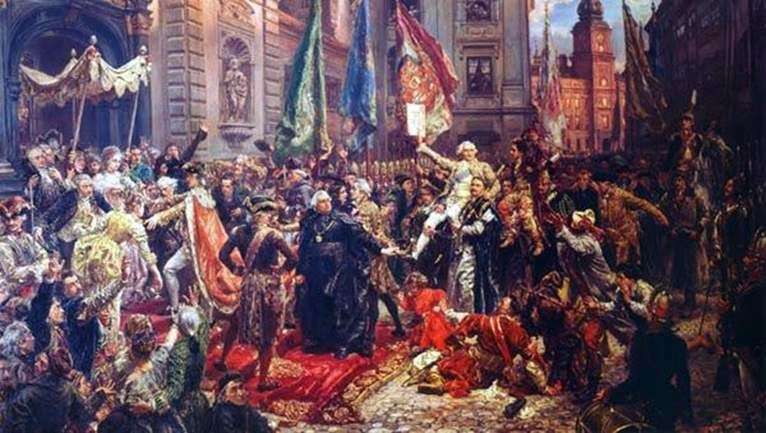
In the May 3 Constitution, Mateiko again turned to the idea of connecting in a single moment a multitude of plot lines of the development of Polish history. In this case, the most suitable subject for this purpose was the artist’s moment when the ambassadors of the Sejm moved from the Conference Room to the Church of St. John.
Along the street in the direction of the church moving, surrounded by the crowd welcoming them, the creators and supporters of the Constitution. The procession is led by King Stanislav Augustus Ponyatovsky, the author of the reform, education Hugo Kollontai, is a little further from him. Behind the ambassadors are on their shoulders two marshals of the Sejm – Stanislav Malakhovsky and Casimir Nestor Sapega. The procession closes: Stanislav Stashits and Andrzej Zamoyski.
The latter carries along a peasant onlooker from the crowd. Among the witnesses of this historical event presented in the picture are the so-called commentary figures – images designed to imperceptibly and unobtrusively emphasize the author’s attitude to what happened. In the “Constitution of May 3,” researchers find at least two such figures: it is the eloquently gesturing old Jew and the priest Hofbauer. It is believed that these figures show the critical attitude of the artist to the event depicted. Mateiko was indeed a staunch conservative, an opponent of the liberal provisions of the Constitution.
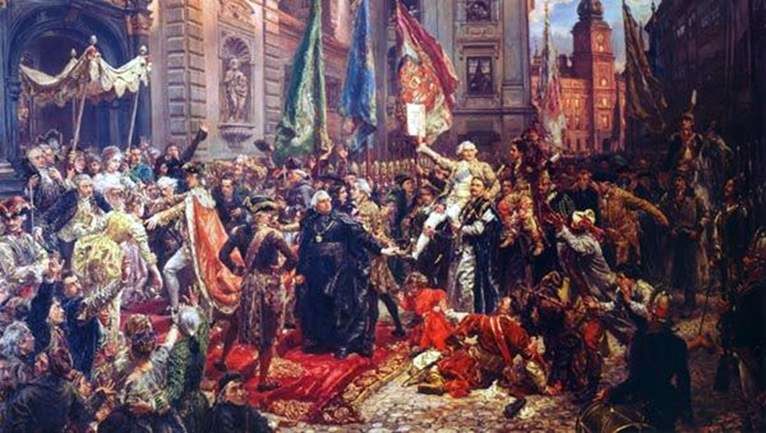 Constitution du 3 mai – Jan Aloysy Matejko
Constitution du 3 mai – Jan Aloysy Matejko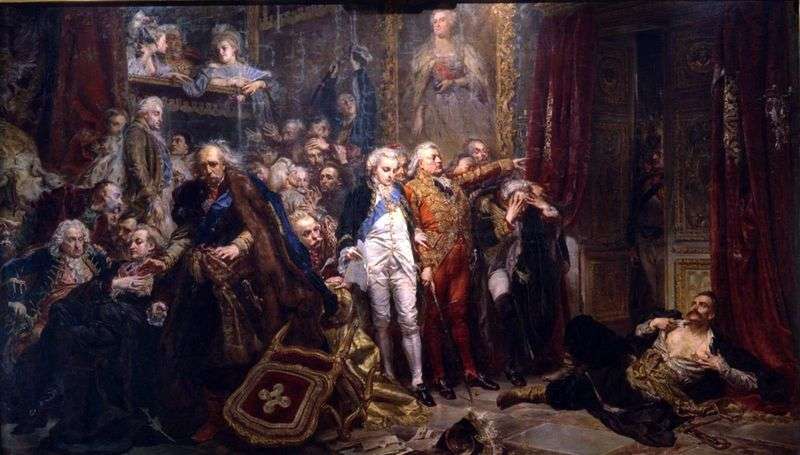 The decline of Poland by Jan Aloiy Mateiko
The decline of Poland by Jan Aloiy Mateiko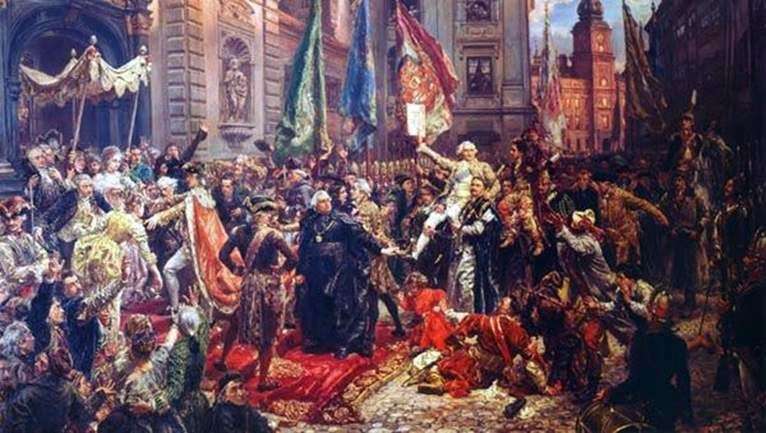 Constitución 3 de mayo – Jan Aloiy Mateiko
Constitución 3 de mayo – Jan Aloiy Mateiko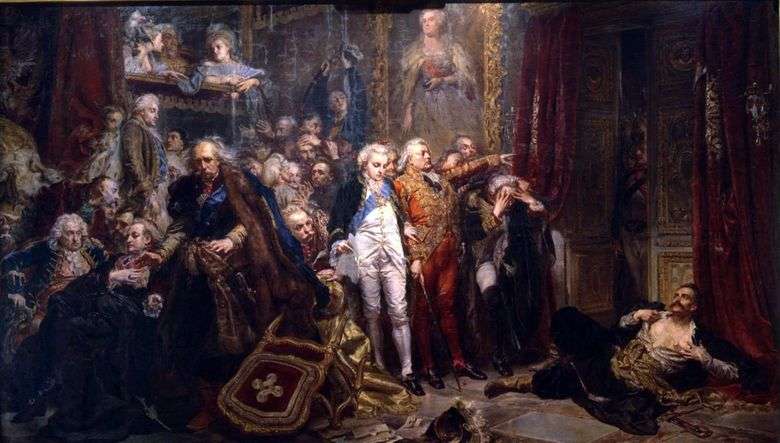 El declive de Polonia – Jan Aloiy Mateiko
El declive de Polonia – Jan Aloiy Mateiko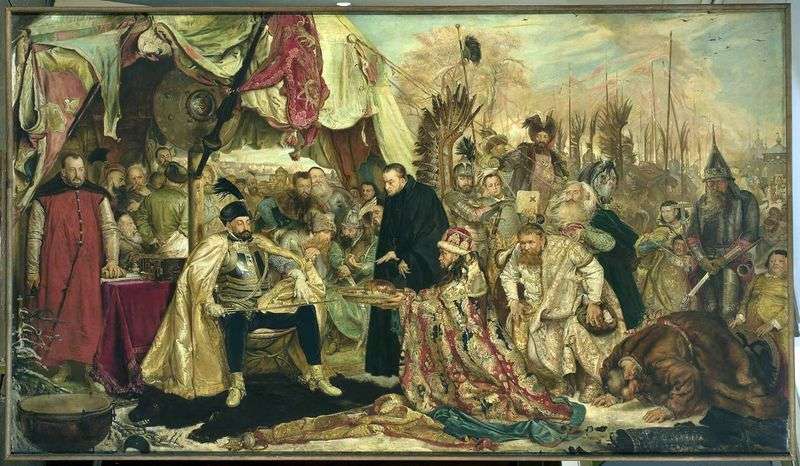 Batory near Pskov by Jan Aloiy Mateiko
Batory near Pskov by Jan Aloiy Mateiko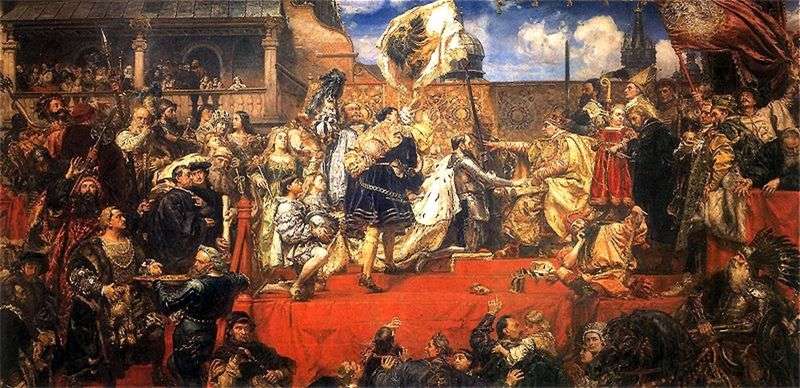 Prussian Tribute by Jan Aloiy Mateiko
Prussian Tribute by Jan Aloiy Mateiko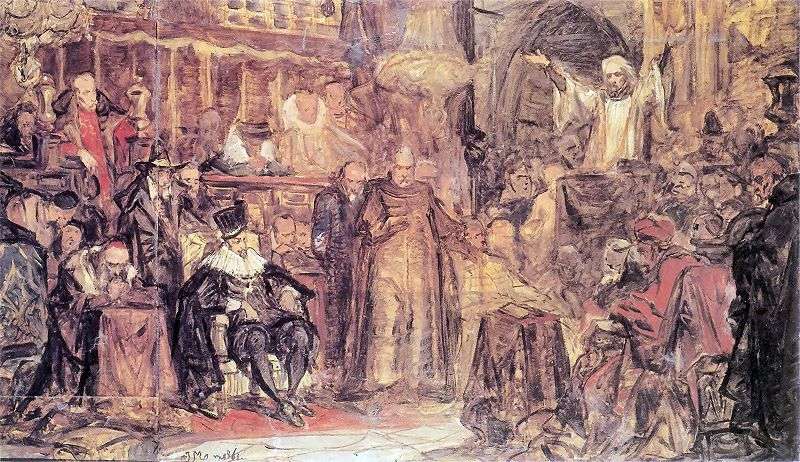 Skargi’s Sermon by Jan Aloiy Mateiko
Skargi’s Sermon by Jan Aloiy Mateiko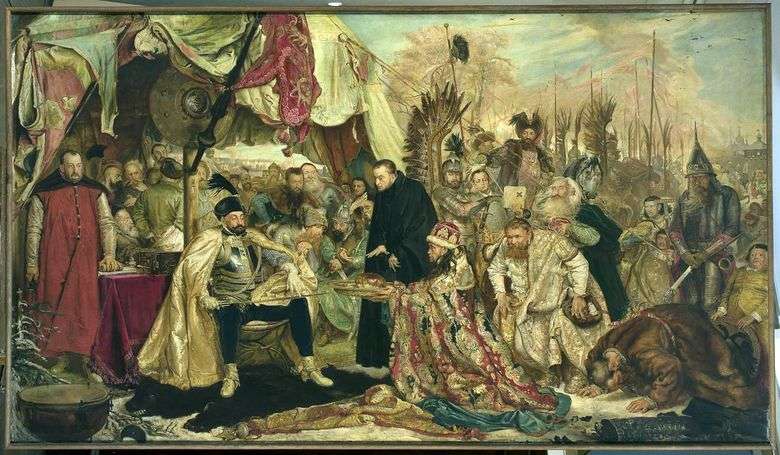 Batory cerca de Pskov – Jan Aloiy Mateiko
Batory cerca de Pskov – Jan Aloiy Mateiko